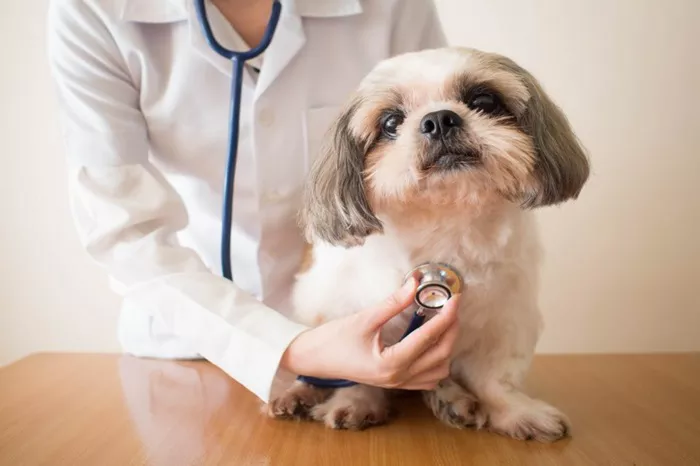Pet insurance has become an essential part of being a responsible pet owner. Just like health insurance for humans, it helps offset the cost of veterinary bills and ensures that you can provide the best care for your pet in times of need. However, many pet owners are unsure about what exactly they can claim on their pet insurance. This guide will break down what is typically covered under pet insurance, the types of claims you can make, and how to make the most out of your policy.
What Does Pet Insurance Cover?
Pet insurance policies can vary, but most fall into one of three categories: accident-only, time-limited, or lifetime coverage. Understanding what your specific policy covers is crucial to ensuring you’re fully prepared for any emergencies or unexpected health issues that may arise.
Accident-Only Coverage
As the name suggests, accident-only coverage is designed to help you with the cost of treatment when your pet is injured in an accident. This type of coverage doesn’t include illnesses or other health issues that may develop over time. Claims you can make under an accident-only policy include:
Injuries from accidents, such as broken bones, cuts, or abrasions
Emergency surgeries needed due to accidents
Diagnostic tests related to accidents
Treatments or procedures directly related to an injury
While accident-only policies tend to be cheaper, they’re less comprehensive and don’t cover illnesses, which can be costly.
Time-Limited Coverage
Time-limited policies provide coverage for a specific period (usually 12 months) for each condition that your pet develops. After this time limit expires, you cannot claim for that particular condition anymore. Typical claims under time-limited policies include:
Treatments for illnesses diagnosed during the covered period
Surgery or ongoing treatments related to an illness
Diagnostic tests for health conditions
Time-limited policies are great for pets who are healthy but don’t provide long-term protection for chronic conditions.
Lifetime Coverage
Lifetime policies are the most comprehensive and are ideal for those who want peace of mind in case of serious illness or ongoing health problems. With lifetime coverage, your pet is covered for the duration of their life, as long as you continue to pay premiums. Claims typically covered by lifetime policies include:
Long-term treatment for chronic illnesses like diabetes or arthritis
Surgery or treatments for serious diseases, including cancer
Diagnostic tests, medications, and other treatments for long-term conditions
Emergency treatments for accidents and illnesses
While these policies tend to be the most expensive, they offer the best protection and ensure your pet receives the care they need for their entire life.
Common Conditions and Treatments Covered by Pet Insurance
Pet insurance policies can cover a wide range of conditions and treatments. Here’s a breakdown of what you might be able to claim under different circumstances:
Accidents
Injuries from accidents can occur at any time, whether your pet is playing, exploring, or simply walking. Common claims related to accidents include:
Fractures and Broken Bones: If your pet breaks a bone in an accident, your insurance can help cover the costs of X-rays, treatment, and surgery.
Cuts and Lacerations: Cuts and scrapes from accidents, such as being hit by a car or falling, can result in costly veterinary bills. Pet insurance can help cover the treatment and bandages required.
Poisoning: Accidental poisoning can be extremely dangerous for pets. If your pet ingests something harmful, such as chocolate, household chemicals, or plants, insurance can cover the treatment costs.
Foreign Object Ingestion: Pets often chew or swallow objects that they shouldn’t, which can cause internal damage. Claims for the removal of these objects and associated treatment are typically covered.
Illnesses
While some pet insurance policies are accident-only, many cover a wide range of illnesses as well. Common illnesses that you can claim for include:
Cancer Treatment: If your pet is diagnosed with cancer, lifetime coverage can help pay for surgeries, chemotherapy, and ongoing treatments.
Arthritis: As pets age, they may develop arthritis or other joint issues. Pet insurance can help cover medications, surgeries, or physical therapy to alleviate pain and improve mobility.
Diabetes: If your pet develops diabetes, insurance can cover the costs of insulin, blood tests, and vet visits to monitor the condition.
Heart Disease: Conditions like heart disease can be treated with medication, surgery, or other interventions, which are typically covered by insurance.
Kidney Disease: Kidney failure is common in older pets, and insurance can help cover the cost of treatments, dialysis, and medication.
Preventive Care
Some pet insurance policies also cover preventive care, although this depends on the specific policy you have. Preventive care can include:
Vaccinations: Regular vaccinations are essential for protecting your pet from diseases. Some pet insurance policies may reimburse the cost of routine vaccinations.
Routine Checkups: Regular vet visits for health checkups may be partially covered by some policies.
Parasite Control: Treatment for parasites like fleas, ticks, and worms may be covered, especially if they are prescribed by your vet.
Surgery and Diagnostics
Pets may require surgery or diagnostic tests for a variety of reasons. Common surgeries and tests that you can claim for include:
Spaying/Neutering: Many policies cover the cost of spaying or neutering your pet, although this may depend on the insurer.
Emergency Surgery: If your pet needs surgery due to an injury or health condition, this can be covered under most pet insurance policies.
Diagnostic Tests: If your pet needs blood tests, X-rays, MRIs, or other diagnostic procedures to determine the cause of an illness or injury, these can be covered by insurance.
What Doesn’t Pet Insurance Cover?
While pet insurance covers a wide range of conditions and treatments, there are certain things it does not cover. Common exclusions include:
Pre-existing Conditions: If your pet has a pre-existing condition before you take out insurance, most policies won’t cover treatment for it. Some insurers may offer limited coverage for pre-existing conditions after a waiting period.
Cosmetic Procedures: Pet insurance usually doesn’t cover cosmetic treatments or procedures that aren’t medically necessary, such as ear cropping or tail docking.
Routine Care: Many basic policies don’t cover routine care like grooming or nail clipping, even if it’s essential for your pet’s health.
Pregnancy and Birth: Pet insurance generally doesn’t cover costs related to pregnancy, birth, or complications during birth.
Breed-Specific Conditions: Some breeds are more prone to certain genetic conditions. Pet insurance may not cover conditions that are specific to your pet’s breed if they’re considered hereditary.
How to Make a Pet Insurance Claim
The process of making a pet insurance claim can vary by provider, but it generally involves the following steps:
Visit the Vet: Take your pet to the vet for an examination or treatment. Make sure to keep all invoices and receipts, as you will need these when filing a claim.
File a Claim: After the treatment, file a claim with your insurance provider. This may involve submitting your vet’s invoice, any supporting documents, and a claim form.
Reimbursement: Once the claim is processed, you’ll receive reimbursement for the covered expenses, minus any excess or deductible. Reimbursement times can vary, but most insurers aim to settle claims within a few weeks.
Tips for Maximizing Your Pet Insurance
To make the most out of your pet insurance, consider these tips:
Read Your Policy Thoroughly: Always understand what’s covered and what’s excluded from your policy. This can help you avoid surprises when you need to make a claim.
Choose the Right Plan: Ensure you choose a plan that fits your pet’s health needs and your budget. Consider factors like age, breed, and any existing health conditions.
Keep Track of Your Pet’s Health: Regular vet visits and maintaining a healthy lifestyle for your pet can help reduce the likelihood of illness and keep your premiums manageable.
File Claims Promptly: The sooner you file a claim after treatment, the sooner you can get reimbursed.
Conclusion
Pet insurance is a valuable tool for managing the health care costs of your beloved pet. Whether you have an accident-only policy or a comprehensive lifetime plan, knowing what you can claim can save you from unexpected financial burdens. From accidents and injuries to illnesses and routine care, pet insurance can help ensure that your pet gets the best care possible. Always make sure to read the fine print of your policy and understand its coverage to make the most of your plan.
Related Topics:
What is the Best and Most Affordable Pet Insurance?





















